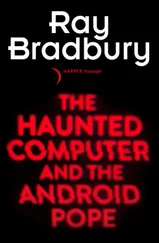Part of the problem was the collective inexperience of the corporate entrepreneurs. It not only hurt them in choosing and evaluating software, but it hurt equally when it came to selling and distributing the product. They just didn’t know how the software distribution pipeline worked, and so they missed most of the best opportunities. The book publishers made their biggest mistake when they assumed that bookstores would become the next big marketplace for software, and that the channels used by the cottage-industry companies would diminish in importance. By focusing their efforts on book-related distribution channels, the book publishers weren’t prepared to play ball with the people whose business was exclusively involved with selling computer products—specialty store distributors.
Still, the book publishers were particularly insistent on the prediction that bookstores would soon become the principal distribution channels for software. “Software,” many of them would repeat, “is just a form of literature that happens to run on a machine.” They overlooked the fact that few bookstore employees know anything about these new products and that it is indeed risky to order half a dozen copies of a product that might sell for anywhere from $50 to $500. How many books sell in that price range? Ultimately, however, the book publishers might be right. Bookstores might well become important distribution channels for software. But not in 1985. Probably not in 1986. And certainly not at $500 a pop.
But another part of the problem was that book publishers didn’t know the real size or nature of the market. They paid too much for products because they thought the real market was much larger than it turned out to be. When friendly representatives from the cottage software companies suggested that the market wouldn’t support such high software acquisition prices, the corporate entrepreneurs merely assumed that the cottage companies had failed to address most of the market because of marketing inexperience.
And the corporate newcomers talked a lot about “installed base”—the millions and millions of home computers that had already been sold. The managers of cottage companies who didn’t buy into this myth, either, could have told them from experience with the long-vanished Commodore VIC and Texas Instruments markets that installed base doesn’t make a whit of difference when the principal channels for the sale of software are stores that still make most of their living selling hardware. If they aren’t still selling Widget Computers, they don’t really want to bother selling Widget Software, even if there are a billion Widget Computers already out there.
So until independent software channels become the principal channels for the sale of software, the size of the real software market depends on the rate of sale of computers, not the installed base. And the installed base was going up every day in late 1983 and 1984. But the rate of software sales wasn’t. For while the installed base increased, the rate of increase was decreasing, and since most software is purchased with the computer or soon thereafter, software sales are tied to the rate of computer sales, not to the number of machines that have already been sold.
The corporate biggies weren’t the only ones to be caught with their assumptions down. More than a few of the cottage-industry folks missed this point, too. The sudden demise of the Commodore VIC market hurt companies like Human Engineered Software. The virtual disappearance of Atari made life difficult for Atari-oriented companies like Synapse. The installed base was large, alright. But it wasn’t buying new software. As a result, many software publishers that had been in the business for years started to go under.
In January 1984, a small advertisement appeared in the Wall Street Journal, offering a software company for sale for $500,000. The company was not named in the ad. Interested parties were directed to Box WP736. Tom Measday, Brøderbund’s vice president for sales and marketing at the time, saw the ad and responded to it. We were looking for good acquisitions, and who knew what products might be involved in this mystery company?
We were in for a surprise. We soon learned that the ad had been placed by none other than our old friend Jerry Jewell. The company for sale was Sirius, once the largest of the companies in the loose association of Apple-oriented software companies known as the Brotherhood.
We met with Jerry the following week to talk about the situation and find out what had gone wrong. The figures painted a grim picture, indeed. Sirius was under the gun. It owed its creditors a half million dollars and had virtually no assets left except its inventory of old game titles and the possible proceeds from its lawsuit against 20th Century-Fox for failing to publish Sirius VCS games. Sirius had not been able to afford to purchase disks since December, so the company had not been shipping products for almost a month. As a result, its products had all disappeared from the best-seller lists, which made it hard to determine which products were still alive and which were dead.
Among those Sirius programs that apparently were still active in the market was a typing program, Type Attack. But was it, and the few other programs that were still selling respectably well, worth half a million dollars? We at Brøderbund didn’t think so, and apparently neither did anyone else. In the summer of 1984, Sirius filed for reorganization under
Chapter 11 of the bankruptcy laws. In September, Scarborough Systems, a venture start-up in New York, picked up Type Attack for a reported $60,000.
Jerry Jewell worked hard for months to tie up the loose ends—or clear away the wreckage, depending on how you look at it—from Sirius Software. Gamely, he started a new software company, Softprose, which found 1984 to be a pretty tough year. It turned out to be a decisive year for many companies in the old Brotherhood of Apple-oriented software publishers. Ken Grant and Ihor Wolosenko looked at the future prospects for their company, Synapse Software, during the summer of 1984 and decided that it was time for profittaking. In October, they sold Synapse to Brøderbund.
By the end of 1983, only three consumer software markets in the United States were worth spending much time on: those for IBM, Apple, and Commodore. And there were those who thought that Apple’s days were numbered. IBM was about to roll out its long-rumored “Peanut” computer and was universally expected to grab a huge chunk of the home computer market away from Apple, just as the IBM PC had wrested more than half of the small-business market away from Apple in the previous two years. Apple had a new product in the works, too, however. It was called the “Macintosh,” but it was not getting anything like the press that the Peanut got. After all, Apple’s two previous products—the Apple III and Lisa—hadn’t been box-office smashes.
Ken and Roberta Williams decided to bet their Sierra On-Line farm on IBM. Their company, after an unbroken string of successes in their first three years of operation, began suffering its first losses in mid-1983, and Ken, in his inimitable way, was looking for an opportunity to turn the company’s fortunes around. The new IBM home computer, the Peanut, didn’t seem like a bad bet—lots of retailers decided the same thing when the machine was announced. In the summer of 1983, Ken told me that he had two-thirds of his programmers working on a secret project for IBM.
You see, Ken Williams understood about installed base and rate of sale. He knew that if the Peanut took off, his one-year advantage in software development would be worth millions. He is a gambler by instinct. I suspect that he also likes to be seen in the company of the rich and famous, and IBM is certainly both. The IBM deal was made to order for him. Then, when the Peanut was released into the market under the name PCjr, in January 1984, several things nobody expected to happen, happened.
Читать дальше










